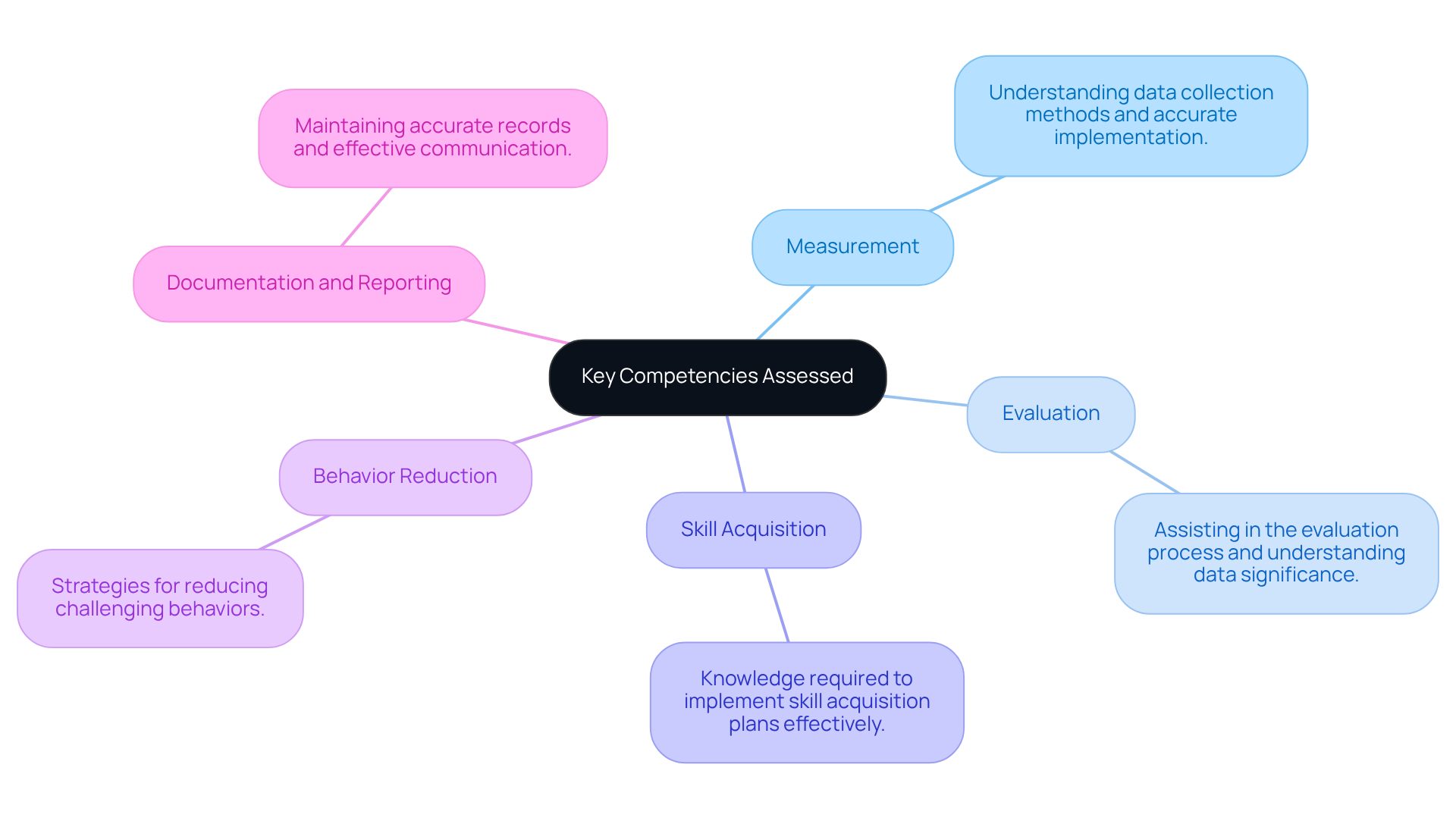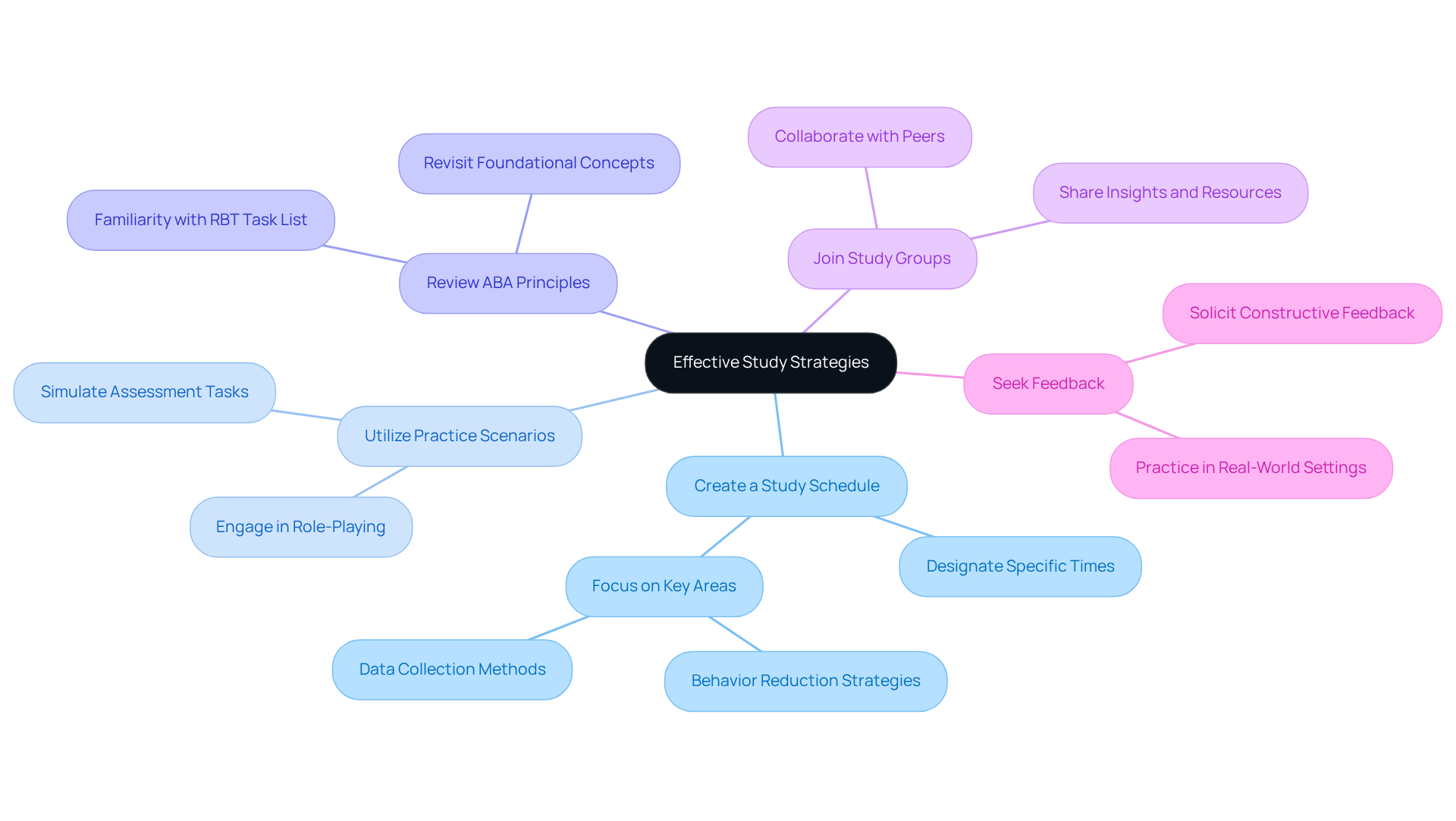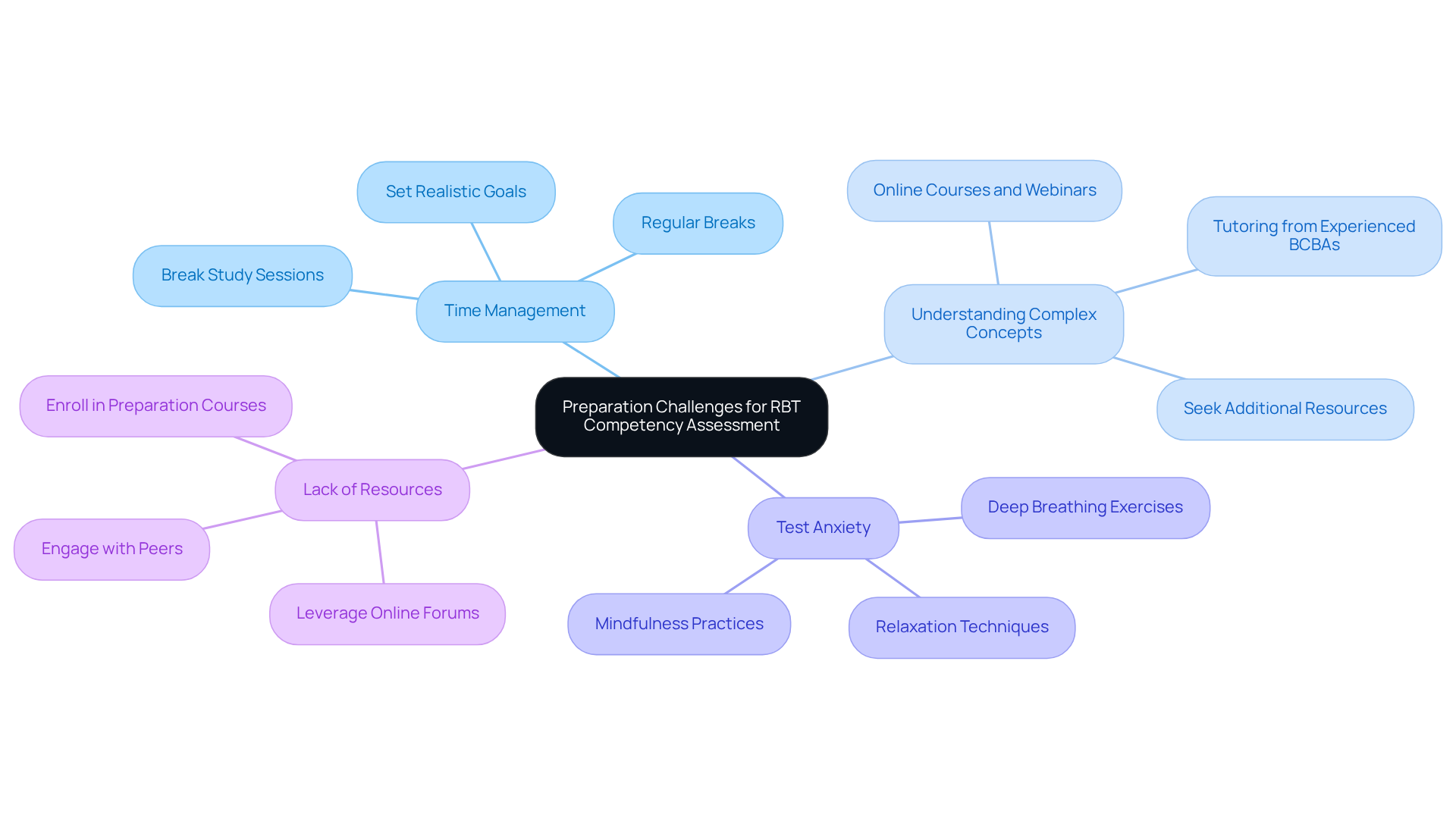June 29, 2025

The article highlights effective strategies for mastering the RBT competency assessment practice, a critical component for verifying the skills of Registered Behavior Technicians in Applied Behavior Analysis. Understanding key competencies is paramount. By adopting structured study strategies, candidates can significantly enhance their preparation. Furthermore, addressing common challenges faced during preparation is essential for boosting readiness and confidence. Ultimately, these strategies not only improve candidates' chances of success but also equip them with the necessary skills to excel in their roles.
The RBT competency assessment stands as a critical benchmark for aspiring Registered Behavior Technicians, confirming their preparedness with the essential skills vital for effective practice in Applied Behavior Analysis. This article explores strategic approaches candidates can employ to bolster their preparation, from mastering key competencies to implementing effective study techniques. Yet, with a considerable percentage of candidates grappling with challenges like test anxiety and time management, how can one effectively navigate these obstacles to secure success on the first attempt?
is a crucial tool that verifies Registered Behavior Technicians (RBTs) possess the necessary skills and knowledge for effective practice in Applied Behavior Analysis (ABA). Administered by a qualified BCBA, the RBT competency assessment practice includes a variety of tasks that reflect the essential competencies required in the field, specifically within five key domains:
Notably, the evaluation incorporates direct observation and practical demonstrations, vital for assessing individuals' skills in real-world situations. Understanding the framework and objectives of the assessment is imperative for individuals, as it underscores the application of ABA principles in practical contexts. Recent data indicates that approximately 70% of applicants successfully complete on their first attempt, underscoring its importance in preparing RBTs for their roles and ensuring high-quality care in ABA therapy. By familiarizing themselves with the requirements of the RBT competency assessment practice and engaging in hands-on practice, candidates can significantly enhance their readiness and confidence, ultimately contributing to the provision of exceptional ABA therapy.
The rbt evaluates several key competencies crucial for success in the field. These include:
By utilizing the rbt competency assessment practice, individuals can examine these competencies and develop a targeted learning plan that comprehensively covers each area, enhancing their professional capabilities.

To prepare effectively for the RBT competency assessment practice, candidates must adopt targeted study strategies that enhance their chances of success.
By applying these strategies, candidates can greatly enhance their readiness and confidence for the RBT competency assessment practice, ultimately increasing their likelihood of success on the first attempt.

Candidates preparing for the RBT competency assessment practice often encounter several challenges that can hinder their success. To address these common issues effectively, consider the following strategies:
By proactively addressing these challenges, candidates can significantly enhance their preparation and improve their chances of success in the RBT competency assessment practice.

Mastering the RBT Competency Assessment practice is not just beneficial; it is essential for aspiring Registered Behavior Technicians. This preparation ensures they are equipped with the necessary skills to provide high-quality care in Applied Behavior Analysis. By comprehensively understanding the assessment's framework and key competencies, candidates can approach their preparation with confidence, ultimately enhancing their effectiveness in the field.
The article highlights several critical aspects of the RBT competency assessment, including the five key domains:
It emphasizes the importance of implementing effective study strategies such as:
Furthermore, addressing common preparation challenges, such as time management and test anxiety, can significantly improve candidates' readiness for the assessment.
In conclusion, the RBT competency assessment practice not only validates the skills of behavior technicians but also plays a vital role in delivering quality ABA therapy. By adopting the strategies outlined in this guide, candidates can navigate their preparation journey more effectively, ensuring they are well-prepared to meet the demands of their profession. Embracing these insights and techniques will enhance individual success rates and contribute to the overall advancement of the field of behavior analysis.
What is the RBT competency assessment?
The RBT competency assessment is a tool that verifies Registered Behavior Technicians (RBTs) have the necessary skills and knowledge for effective practice in Applied Behavior Analysis (ABA).
Who administers the RBT competency assessment?
The RBT competency assessment is administered by a qualified Board Certified Behavior Analyst (BCBA).
What are the key domains evaluated in the RBT competency assessment?
The assessment evaluates competencies in five key domains: Measurement, Assessment, Skill Acquisition, Behavior Reduction, and Documentation.
How is the RBT competency assessment conducted?
The assessment includes direct observation and practical demonstrations to assess individuals' skills in real-world situations.
Why is it important to understand the RBT competency assessment framework?
Understanding the framework and objectives of the assessment is crucial as it highlights the application of ABA principles in practical contexts.
What percentage of applicants successfully complete the RBT Competency Evaluation on their first attempt?
Approximately 70% of applicants successfully complete the RBT Competency Evaluation on their first attempt.
How can candidates enhance their readiness for the RBT competency assessment?
Candidates can enhance their readiness and confidence by familiarizing themselves with the assessment requirements and engaging in hands-on practice.
What is the ultimate goal of the RBT competency assessment?
The ultimate goal of the RBT competency assessment is to ensure high-quality care in ABA therapy by preparing RBTs for their roles.
Our expert recruitment strategies and AI-driven sourcing ensure that you receive top-notch candidates quickly, without compromising on quality. Whether you’re looking for BCBAs, Clinical Directors, or RBTs, we’ve got you covered.